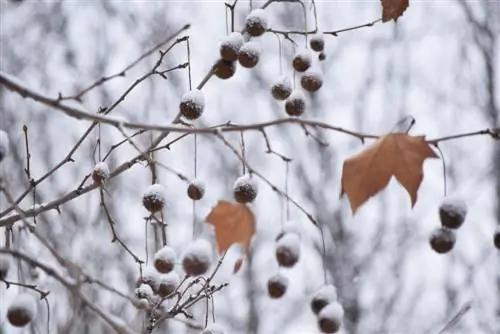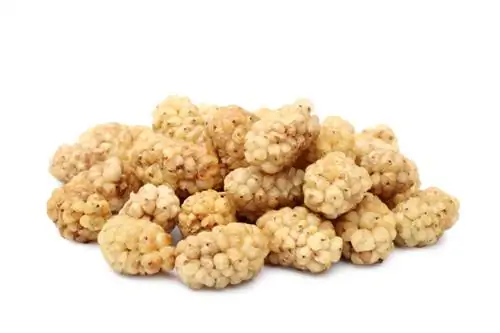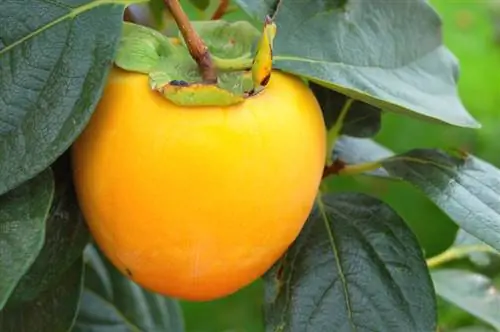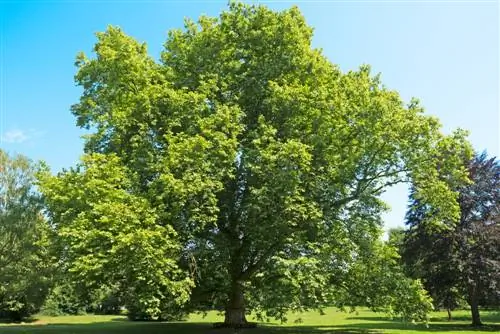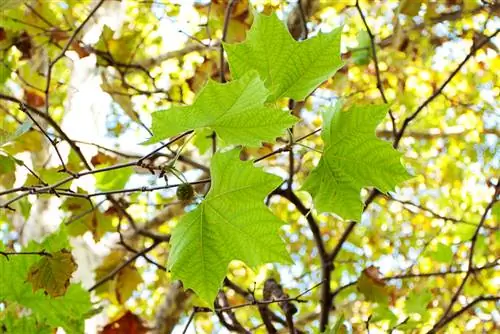- Author admin [email protected].
- Public 2023-12-16 16:46.
- Last modified 2025-01-23 11:22.
Plane trees are not just green leaf wonders. The trees produce abundant flowers every year, although they are inconspicuous in appearance. After fertilization, the fruits develop months later. They then hang on the tree until winter.
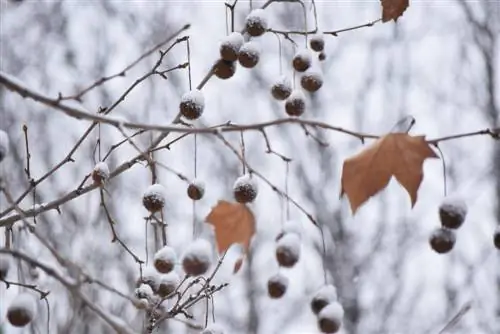
What does the fruit of a plane tree look like?
The fruit of the plane tree is a spherical, approximately 3 cm large nut fruit that hangs on the tree from October. It contains cylindrical nuts with seeds that can be used for propagation in winter, but are not edible for humans.
Flowering and fertilization
From April, or May at the latest, the plane tree sprouts new leaves and at the same time its flowers. The tree is monoecious with separate sexes, i.e. the tree bears male and female flowers at the same time. The male inflorescences have a greenish color, while female inflorescences are wine red.
The flowers are pollinated by the wind. The male flowers fall earlier than the female ones.
Spherical fruits
Fruits can only develop from the female flowers. However, these are a long time coming. Although the plane trees bloom in spring, they are not finished hanging on the tree until October. Neither the flowers nor the fruits are bursting with beauty, but they have an interesting feature: their spherical shape.
- each fruit ball is approx. 3 cm in diameter
- the fruits hang from the branch on thin stalks
- usually two fruits on one stem
- the stem has a total length of 15 to 20 cm
- the unripe fruits are light green
- they turn brown as they ripen
Tip
Be careful when coming into contact with the fruit. They, but also the leaves, have fine hairs that can be inhaled. Afterwards, allergic reactions can occur, comparable to hay fever.
Nuts and seeds
The fruits of the plane tree are grouped as collective nuts. The fruit balls contain a large number of cylindrical nuts in which the seeds are hidden. The fruits are not poisonous to us humans, but due to their hardness they are not really edible either.
In winter the fruits become rotten and fall off the tree. This is also the moment when the ripe seeds are accessible to wind and water. They can later germinate on site or are spread by birds, wind and water.
Using seeds for propagation
Anyone can propagate a new plane tree at home from the seeds of a plane tree. But be careful: not all varieties produce germinable seeds. The seeds are stored dry over the winter. The seeds are not sown until the following summer.
Growing plane trees from seeds is only for gardeners with patience, as it takes a long time for them to develop into a larger tree. The advantage is that it is virtually free, unlike nursery specimens. However, there is no guarantee that the young plant is largely genetically identical to the mother tree.

